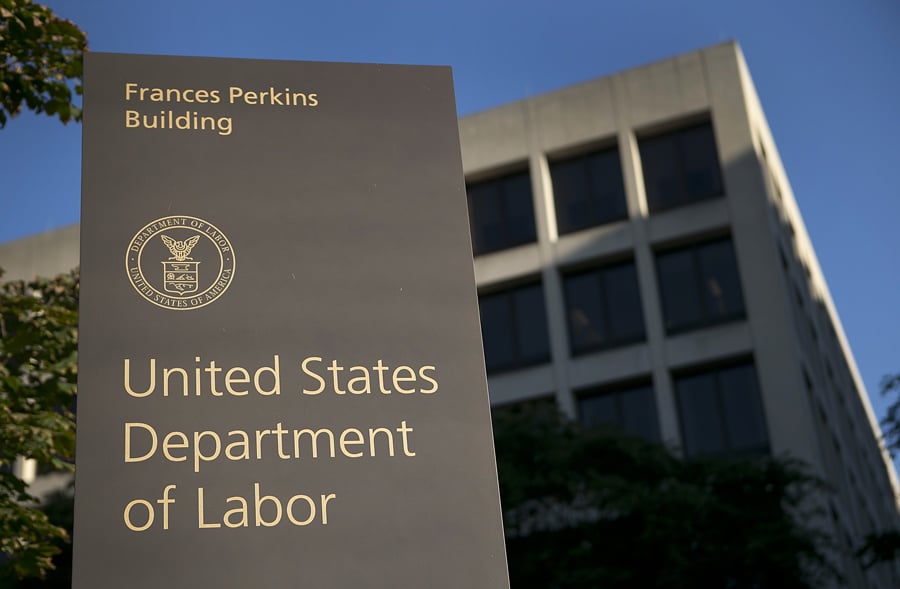

The Department of Labor released regulation Tuesday that would help retirement savers assess how much cash flow they can expect from their nest egg.
The interim final rule would implement a provision of the SECURE Act that requires retirement plan sponsors to include on participants’ account statements an estimate of how much monthly income their accrued account balance would produce when they’re retired.
Two lifetime income illustrations would be required annually. One would convert accumulated savings to a single life annuity. Another would convert them to a qualified joint and survivor annuity. The rule would apply to defined contribution retirement plans, such as 401(k)s.
The DOL said that presenting retirement savings as a lifetime income stream would help workers better grasp how much they need to save for their post-work years.
“Our goal is to help workers and retirees understand how savings translate to retirement income,” DOL acting assistant secretary Jeanne Klinefelter Wilson said in a statement. “Defined contribution plan savings are meant to stretch across the years of retirement. When workers are reminded of what their balances could mean in terms of an estimated monthly dollar amount, they can use this information to plan both savings and spending.”
The lifetime income disclosure interim final rule will go into effect one year after it is published in the Federal Register. In the meantime, DOL will conduct a 60-day public comment period. It could modify the final rule to reflect that input.
Congress approved the SECURE Act in December. The DOL regulation provides the mechanics for making the bill’s lifetime income provision a reality in retirement plans.
The DOL rule contains assumptions plan administrators must use to ensure a uniform methodology in calculating the monthly payment illustrations. The assumptions cover the date on when the annuity payments begin, age, spousal and survivor benefits, interest rate and mortality, according to a fact sheet posted on the Employee Benefits Security Administration’s website.
The DOL rule does not require a retirement plan to offer annuities or participants to use annuities.
The trade association for the retirement income industry, the Insured Retirement Institute, said the rule would help increase retirement savings.
“This is a critical provision of the SECURE Act that IRI fought hard to include,” Jason Berkowitz, IRI chief legal and regulatory affairs officer, said in a statement. “An illustration that translates retirement account balances into monthly income helps consumers to think of retirement savings more like a paycheck than a lump sum. The rule also should encourage workers to save more for retirement.”
The American Council of Life Insurers also had an initial positive reaction to the rule.
“Plan participants make their own choice at retirement on how they want to receive they money they’ve saved,” ACLI chief executive Susan Neely said in a statement. “And the illustrations will provide meaningful information for long-term planning, and for when plan participants change jobs or benefit plans.”

The recently enacted OBBBA makes lower tax rates "permanent," though other provisions could still make earlier Roth conversions appealing under the right conditions.

Americans with life insurance coverage are far more likely to feel assured of their loved ones' future, though myths and misconceptions still hold many back from getting coverage.

Mounting regulatory pressures and proposed taxes are putting a strain on higher education institutions, forcing renewed focus on liquidity management and the secondary market for private equity.

Poll of 1,500 retirement plan investors finds 45% interested in private equity and private debt, with more than three-quarters saying they'd ramp up contributions as a result.

Most firms place a limit on advisors’ sales of alternative investments to clients in the neighborhood of 10% a customer’s net worth.
Orion's Tom Wilson on delivering coordinated, high-touch service in a world where returns alone no longer set you apart.
Barely a decade old, registered index-linked annuities have quickly surged in popularity, thanks to their unique blend of protection and growth potential—an appealing option for investors looking to chart a steadier course through today's choppy market waters, says Myles Lambert, Brighthouse Financial.
